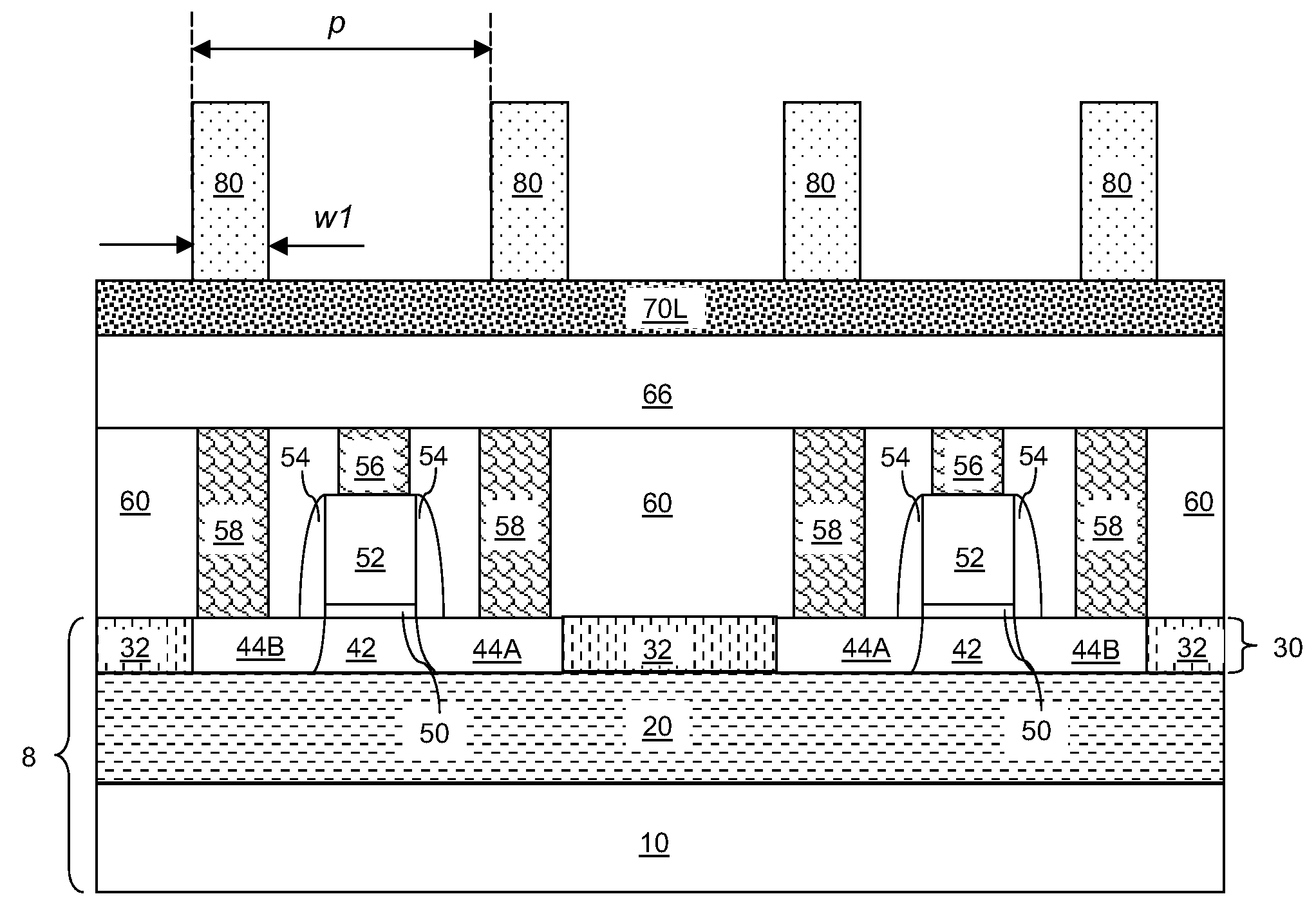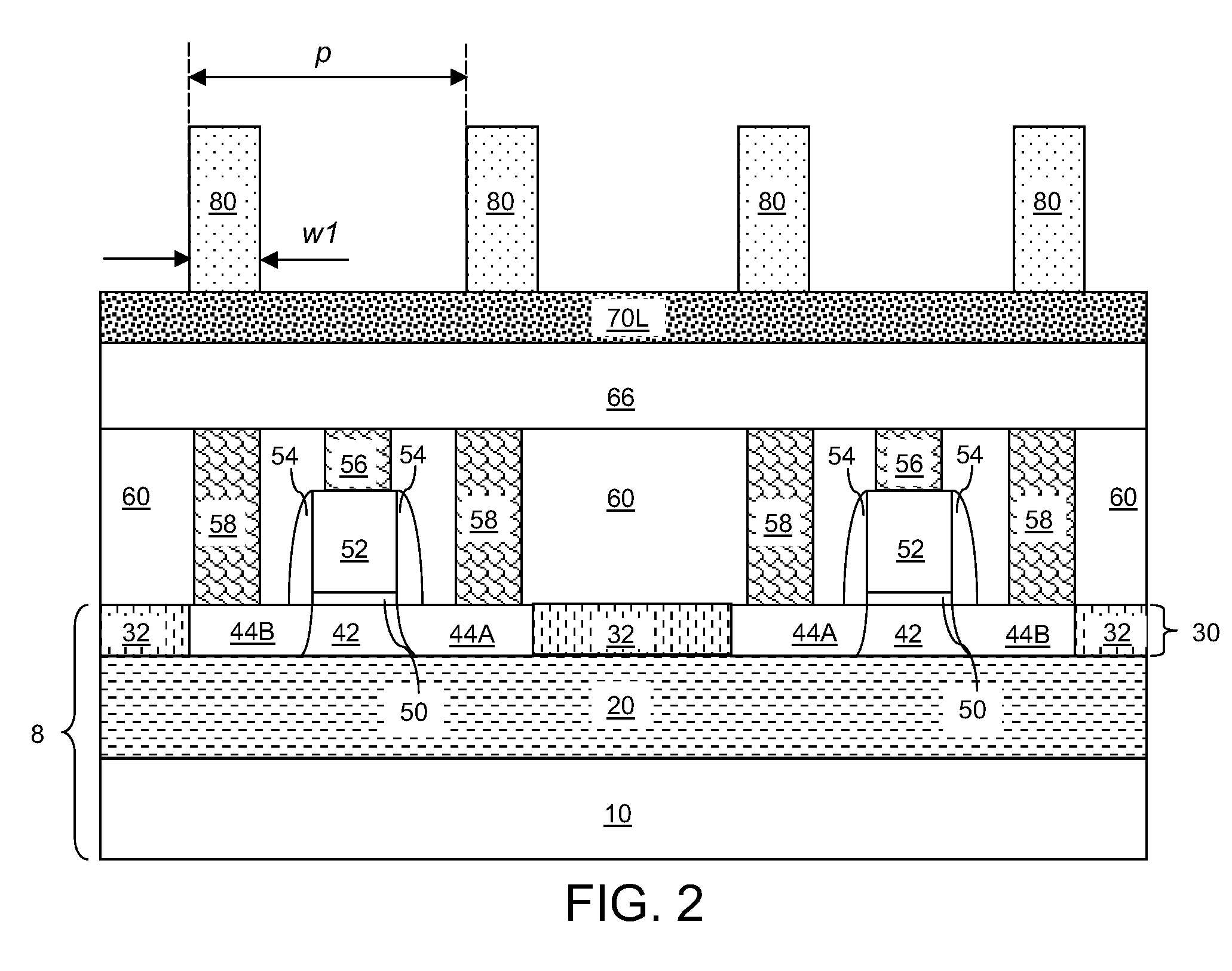Lithography for pitch reduction
- Summary
- Abstract
- Description
- Claims
- Application Information
AI Technical Summary
Benefits of technology
Problems solved by technology
Method used
Image
Examples
first embodiment
[0067]Referring to FIG. 1, a first exemplary lithographic structure according to the present invention comprises a semiconductor structure including a semiconductor substrate 8, semiconductor device structures, an underlying layer 66, an optically dense layer 70L, and a photoresist layer 80. The semiconductor substrate 8 and the semiconductor device structure beneath the underlying layer 66 are shown only for the purposes of illustration. In general, the present invention may be employed on any substrate on which, or in which, an underlying layer is formed.
[0068]The semiconductor substrate 8 may be a semiconductor-on-insulator (SOI) substrate, which comprises a handle substrate 10, a buried insulator layer 20, and a top semiconductor layer 30. Alternately, the semiconductor substrate 8 may be a bulk substrate or a hybrid substrate having a bulk portion and a semiconductor-on-insulator portion. Semiconductor devices, which may be field effect transistors or any other semiconductor de...
second embodiment
[0091]Referring to FIG. 8, a second exemplary lithographic structure according to the present invention comprises a semiconductor structure including a semiconductor substrate 8, semiconductor device structures, an underlying layer 66, a first optically dense layer 170L, and a first anti-reflective coating (ARC) layer 180L, and a first photoresist layer 180L. The semiconductor substrate 8 and the semiconductor device structure beneath the underlying layer 66 are shown only for the purposes of illustration. In general, the present invention may be employed on any substrate on which, or in which, an underlying layer is formed.
[0092]The semiconductor substrate 8 and the semiconductor device structures may be any such structures known in the art, and may be the same as in the first exemplary lithographic structure. The underlying layer 66 may comprise a dielectric layer, a semiconductor layer, a conductive layer, or a stack thereof. In general, the underlying layer 66 may comprise any m...
PUM
 Login to View More
Login to View More Abstract
Description
Claims
Application Information
 Login to View More
Login to View More - R&D
- Intellectual Property
- Life Sciences
- Materials
- Tech Scout
- Unparalleled Data Quality
- Higher Quality Content
- 60% Fewer Hallucinations
Browse by: Latest US Patents, China's latest patents, Technical Efficacy Thesaurus, Application Domain, Technology Topic, Popular Technical Reports.
© 2025 PatSnap. All rights reserved.Legal|Privacy policy|Modern Slavery Act Transparency Statement|Sitemap|About US| Contact US: help@patsnap.com



